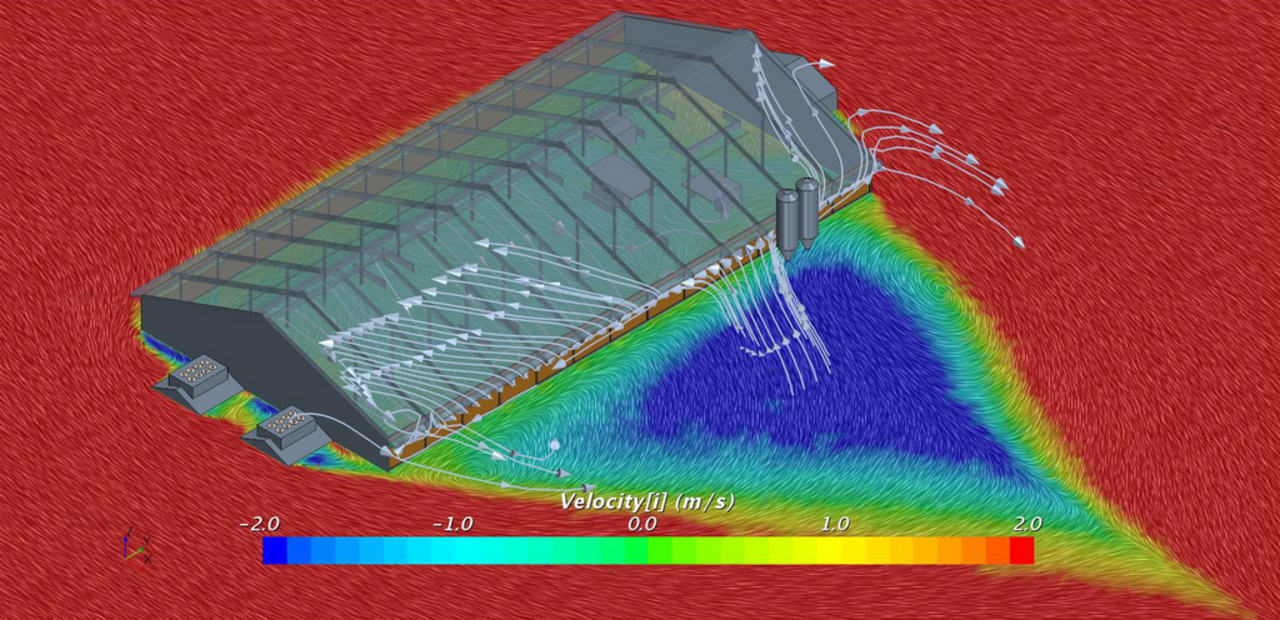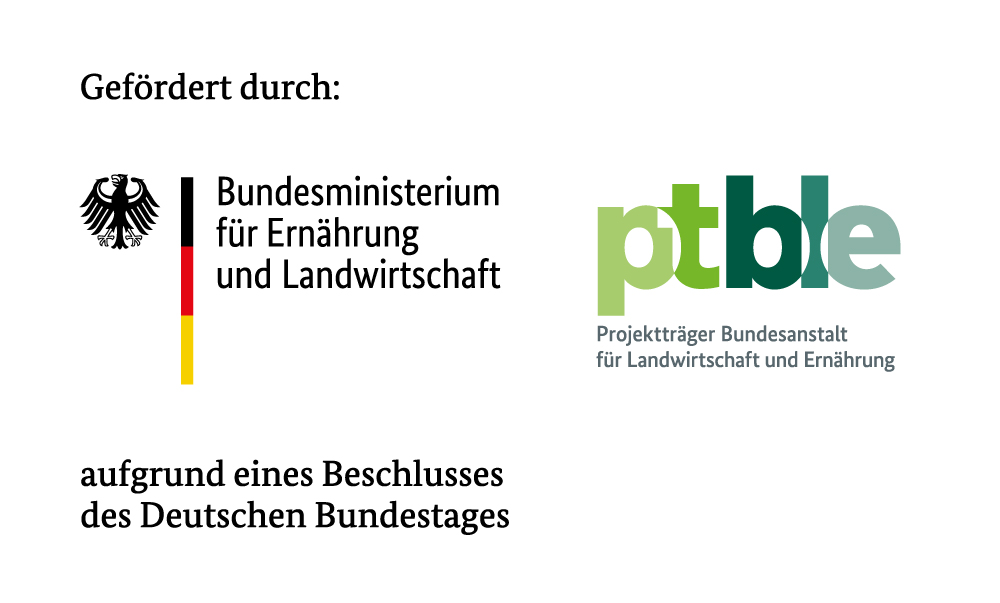Project
Digital twins of free ventilated dairy barns

Application of digital twins to extend the emission data of the naturally ventilated dairy cattle stablesinvestigated in the "EmiDaT" project
How does the air flow through an open stable building and what air pollutants are released as a result? We answer this with the help of a "digital twin".
Approach
The values obtained by the KTBL-project “EmiDaT” which are stored in a data base are going to be supplemented at the end of the project by the results of the simulations done with the digital twins.
With the computational fluid dynamics program STAR-CCM+ by Siemens PLM complex fluid dynamics will be calculated with simultaneous consideration of scalar values like the expansion of ammonia. This is true for flows in buildings as well as external flows and moreover a combination of these two like in this project.
Depending on the boundary conditions that were determined in the measurements a simulation is built up in which the source concentration of ammonia is iteratively adjusted until the simulation’s concentration in the stable matches the concentration of the real measurement. Afterwards, the volume flow through the stable will be varied in this validated numerical model so that the information about the emission data of naturally ventilated dairy cattle stables can be extended. Changes of the operating status like the flow direction or the position of the wind break nets will be taken into account as well. The effects on the flow behaviour in the stable and the emission behaviour of the whole system will be calculated and evaluated in various ways.
Due to the visualisation possibilities within the numerical flow simulation an extensive gain of understanding about the connection between the flow and the emission is expected. Because of standardized input parameters and automated evaluation processes the digital twins of the investigated husbandry practices for dairy cattle are comparable.
Through digital twins we can increase the knowledge of the flow around and through stables, the concentration of the harmful gases in and around the stables and the emission mass flow into the environment.
Data and Methods
In the project, the data collected by the KTBL project “EmiDaT” is to be transferred to the digital twins.
For creating the digital twins, the project participants use the CAD-tool of the commercial simulation software STAR-CCM+ from Siemens PLM. It is capable of mapping geometries digitally and makes them available to other applications within the software.
The numerical flow simulation enables us to calculate complex flow processes and to visualize and account for scalar values like the expansion of ammonia. This is true for flows in buildings as well as external flows and moreover a combination of these two like in this project. Here, it is not necessary to create a complete new geometric model for each variation. The advantage of the numerical flow simulation is that a lot of different boundary conditions can be investigated using one single model.
By changing the parameter flow velocity the volume flow through the stable is varied and extends the information about the emission data of naturally ventilated dairy housings. Changes of the flow direction or the position of the wind break nets will be taken into account as well. The effects on the flow behaviour in the stable and the emission behaviour of the whole system will be calculated and evaluated in various ways.
An extensive post processing module within the software STAR-CCM+ enables the analysis of the big data created with the numerical simulations and the transfer to an understandable presentation form like videos, graphics or tables.
All analysis and assessments will be published. Additionally, the resulting data of the simulations with the digital twins may complement the data of the KTBL-project in the data base.
Results
Thünen-Contact

Involved Thünen-Partners
Funding Body
-
Federal Office for Agriculture and Food (BLE)
(national, öffentlich)
Duration
12.2020 - 11.2023
More Information
Project funding number: 28N202000
Project status:
finished

![[Translate to English:] [Translate to English:]](/media/_processed_/3/6/csm_Hintergrund-Ausschnitt1_9daaef6b89.jpeg)
![[Translate to English:] [Translate to English:]](/media/_processed_/3/6/csm_Hintergrund-Ausschnitt1_0bd7111163.jpeg)

![[Translate to English:] Logo des Bundesministerium für Ernährung und Landwirtschaft](/media/allgemein/logos/BMEL_Logo.svg)